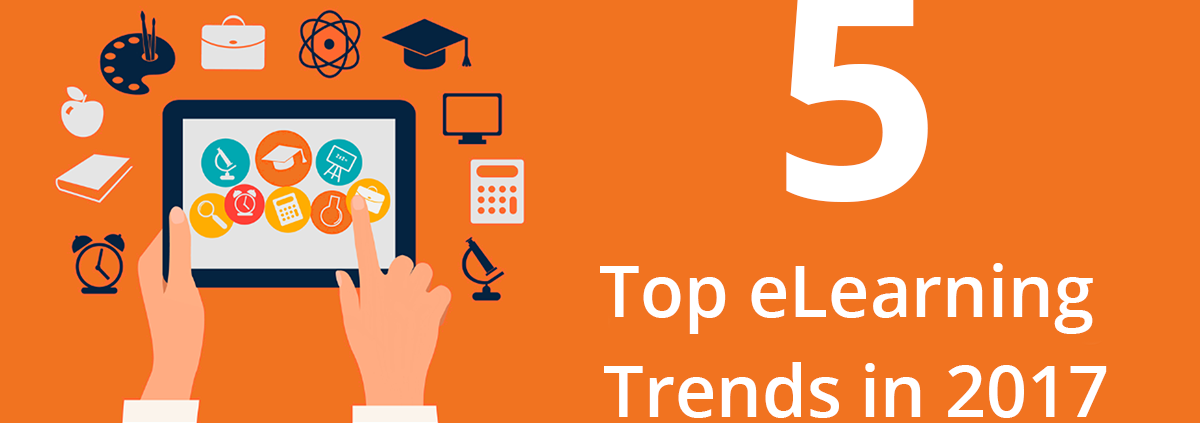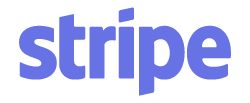5 Elearning Trends in 2017 – The Future is Bright
Many of the “new” elearning technologies have already became mainstream; that’s what happens when technology is galloping forward. Things such as microlearning and mobile learning seem to have surfaced only yesterday, but they are already being broadly implemented across various industries both as a part of formal training, or just something students instinctively do in order to improve their learning. These trends are already well established, and it seems that they are only going to grow in the next year. On the other hand, there are a number of emerging technologies and approaches that are only taking their first steps. It might take some time before they get more widely implemented, but their potential is a guarantee that it will be so one day. As educators, we must keep a close eye on the ever shifting world of eLearning. So let’s take a look at some well-established, and some emerging trends in elearning we can expect to see in 2017.
1. Microlearning
Microlearning is a trend which is already used extensively in employee training and other forms of informal learning. The concept is rather simple; microlearning approach breaks up the learning content into smaller units of focused information which concentrate on producing a particular learning outcome. It mostly used for performance support, to recap key points or to reinforce acquired knowledge and skills.
Convenience is a major factor here, the modern employee has a tight schedule, and microlearning is the most efficient way to provide necessary information. Instruction is usually around 5 minutes long, and it is supported by variety of platforms (PC, tablet, mobile etc.), so it can be accessed anytime anywhere, even on the go. This learning strategy has not yet entered the world of formal education, but it is safe to say that students resort to it on their own. It is especially effective when they need additional clarifications or to revise for a test.
Furthermore, convenience isn’t the only reason why it is so effective. Recent studies on human cognition and long-term memory show that we are most focused and productive during the first 20 minutes of an activity; shorter the better. As we cannot hope that our inherent cognitive abilities are going to change any time soon, we can at least go along with it. Results speak for themselves; therefore we can expect microlearning to stay as one of major elearning trends in 2017.
2. Mobile
Mobile learning is no longer new; as a matter of fact, it has been listed as a trend for past 10 years. It took some time for it to come true, but it finally happened. Mobile technology is finally advanced enough to provide the full potential of mlearning. Wireless networks, supporting and sharing of various content formats finally allows that which we were listening about over the last decade. Moreover, millennials are the first generation native to the information age; they grew up with the internet and mobile devices, and they always keep them close at hand. For them, and the future generations of course, using mobile devices comes naturally, almost instinctively. They expect to be given the option to use mobile devices to learn, and they excel at it. In order to comply with the popular demand for mobile learning, companies all around the world and even formal educational institutions started to look for solutions which would allow them to incorporate it into their curriculums. The added benefit is that mobile devices are a perfect platform to deliver microlearning formats.
MarketsandMarkets forecasts the Global mobile learning Market to grow from $7.98 billion in
2015 to $37.60 billion by 2020, at a Compound Annual Growth Rate (CAGR) of 36.3%. North
America is expected to be the largest market in terms of market size, while Europe and Asia-
Pacific are expected to experience an increase in market traction during the forecast period.
3. Personalization
Personalization implies a shift from the one-size-fits-all curriculum, to an adaptive model. Adaptive model creates a learning environment which is dictated by students’ personal needs, preferred learning style and learning speed. This approach relies on learning analytics provided by the LMSs and big data in order to create the most efficient learning path for each student.
Personalization is again, one of the trends that are present for a long time and that are proven to be extremely effective. Research has shown that one-on-one style lessons with a human tutor are the most effective mode of knowledge transfer. The reason for this is simple, the tutor is fully committed to the student and is able to cater to his/her particular needs and learning goals. Tutor gets to know and analyze the student, and thus has what it takes to tailor a unique learning path for him/her. Since this is practically impossible to accomplish on a larger scale, personalized learning is the best possible substitute.
Technavio predicts the global adaptive learning software market to grow at an impressive CAGR of close to 31% during the forecast period 2016-2020. The adaptive learning software market in the Americas is the largest among all the geographical segments and is expected to generate revenues of over USD 2 billion by the end of 2020.
4. Gamification
Gamification is an attempt to make a more lasting impact on learners and inspire long-term behavior change. It needs to be said that gamification does not imply full-fledged game-based learning, but rather a learning approach that has some aspect or mechanism of a video game (game-like interface, high scores, gaining experience and leveling up, acquiring achievements or in-game currency, completing levels). It is the answer to organizations’ need to provide instruction in a more engaging, motivating and memorable way.
Mobile devices and growing interest in microlearning give further cause to increase the implementation of gamification. It is a perfect combination for creating a more convenient and effective way to provide instruction; since learners are more likely to play through a 5 minute lesson while riding the bus, than invest a substantial amount of time to professional development in addition to their working hours.
MarketsandMarkets forecasts the global gamification market to grow from USD 1.65 billion in 2015 to USD 11.10 billion by 2020. And
5. Virtual Reality (VR)
Virtual Reality (VR), and Augmented Reality (AR) for that matter, take everything that was said about gamification and expand on it, making learning far more immersive. Until very recently, VR has been used mostly for practical training for hazardous situations; those that pose great risks for personal safety or company property (e.g. flight simulators for pilot training). But now, more and more companies are looking for ways to incorporate VR in their training programs, from Health and Safety to customer service.
By far the biggest impediment to wider VR implementation is the associated cost, but the technology will surely become more affordable in the near future. VR is a tool for creating the ultimate learning experience and it is definitely going to grow in popularity, especially as a supplement to practical training.
Teaching strategies and delivery methods change as we discover new possibilities, and research clearly shows that a blended learning approach is more effective than any other mode used by itself. Future curriculums and training systems are going to include a variety of instructional modes and content formats. Elearning brings it all together; in the future LMSs will focus on delivering highly customizable content and learning paths. Microlearning and widespread use of mobile devices will be the preferred mode of delivery, while at least some aspect of instruction is going to be gamified. Elearning has not yet reached its full potential, but we are very excited about the future.
YouTestMe offers a variety of elearning solutions for those who seek to improve the quality of instruction their organization is providing.
Sources:
https://www.marketsandmarkets.com/





